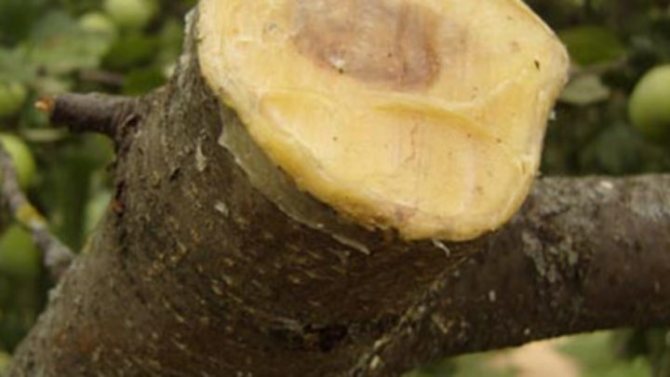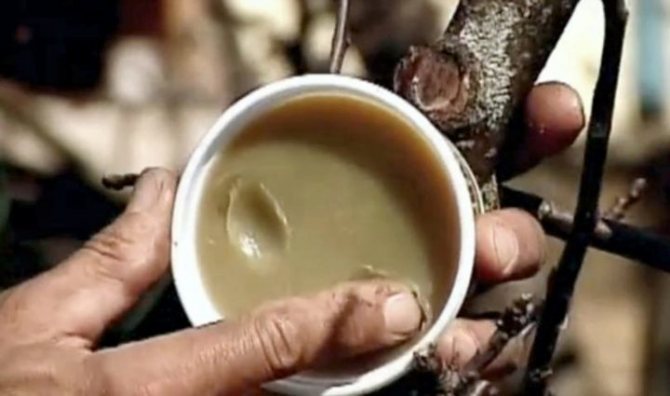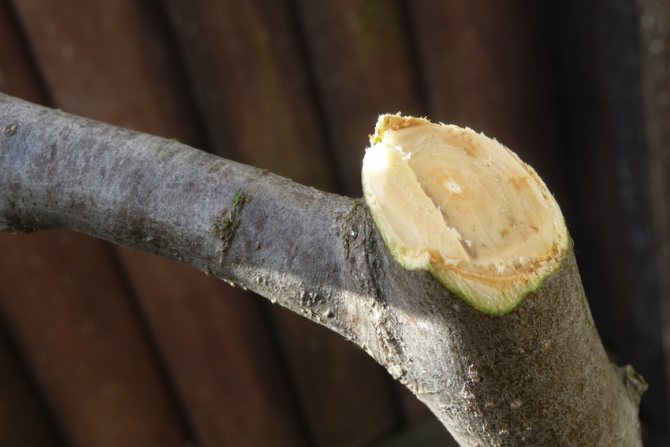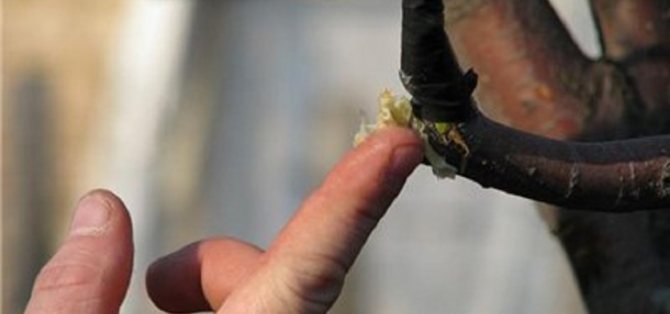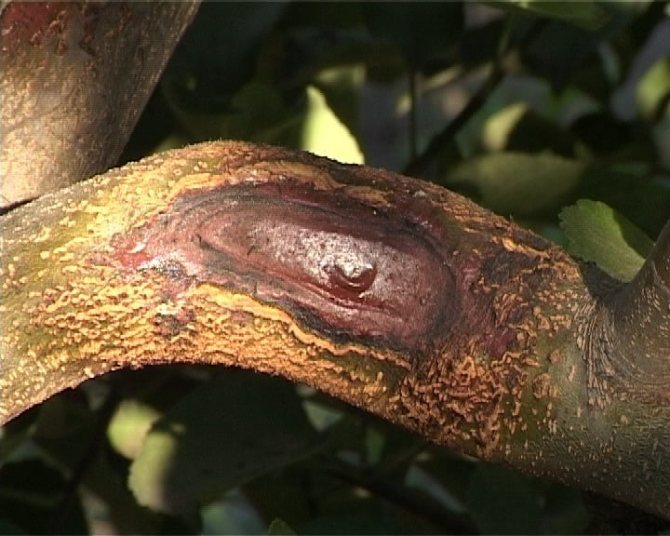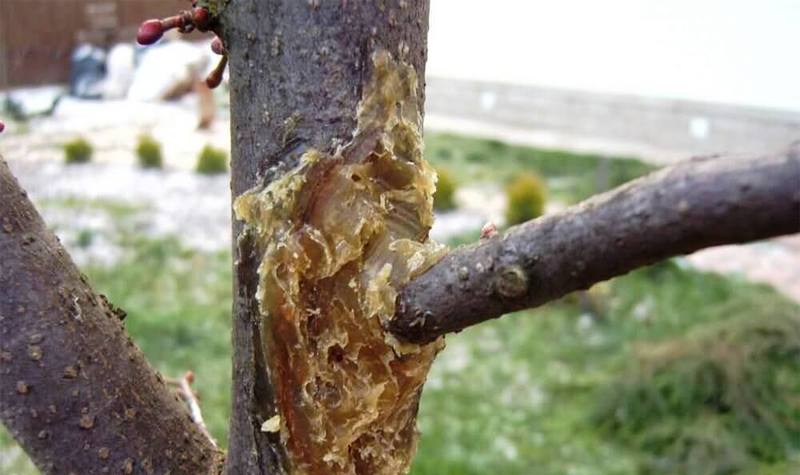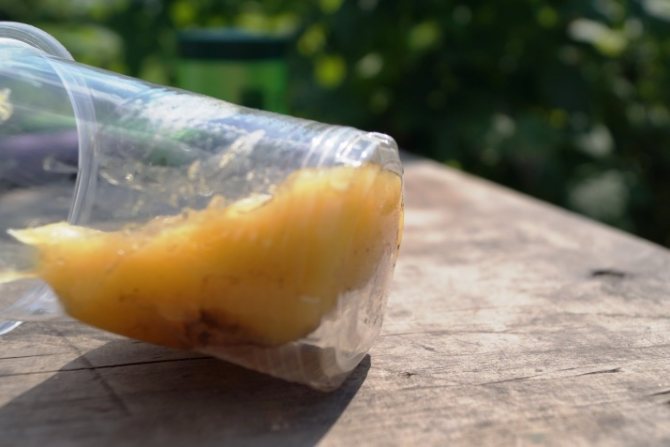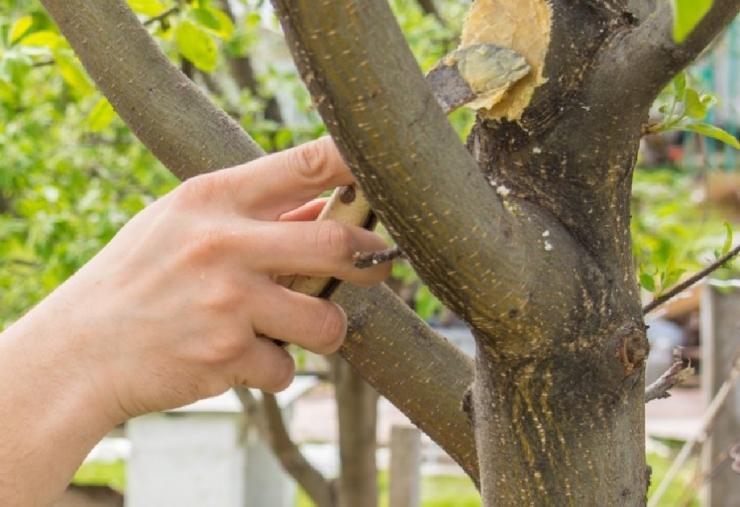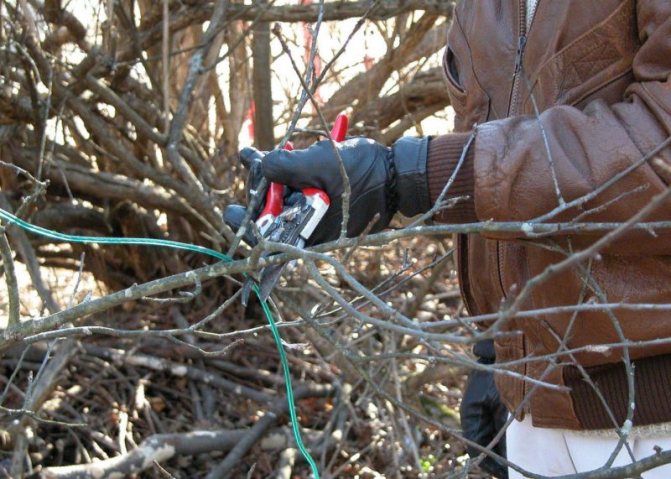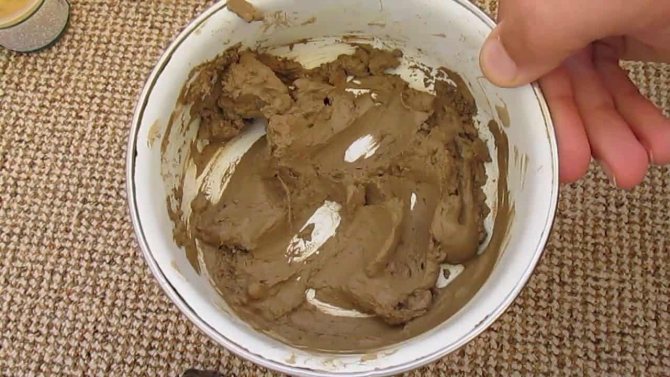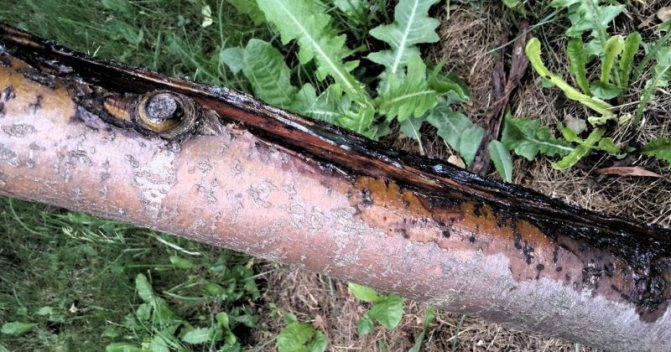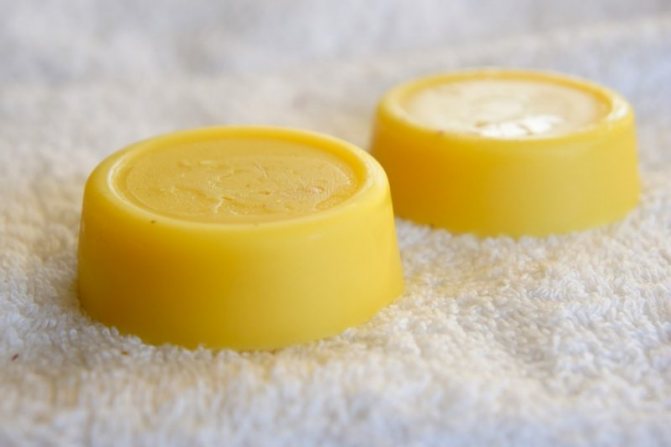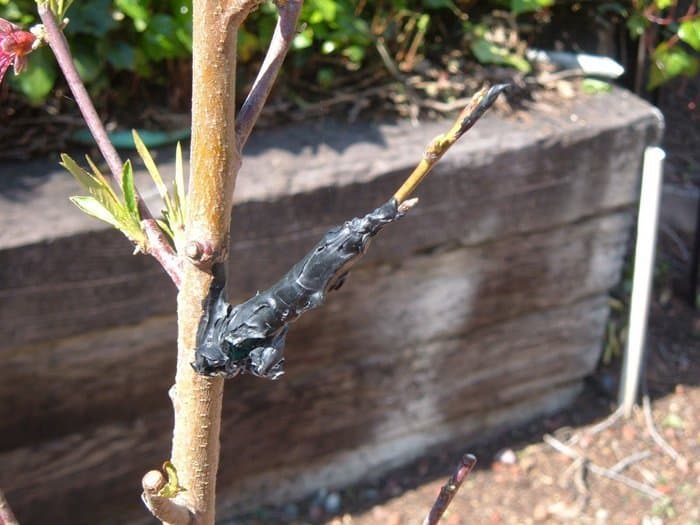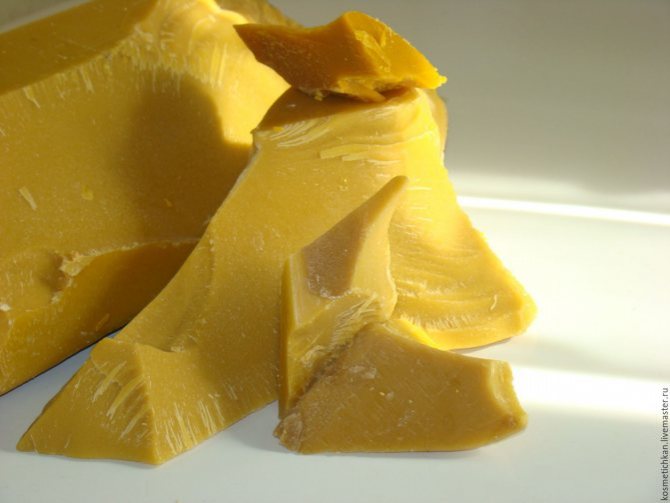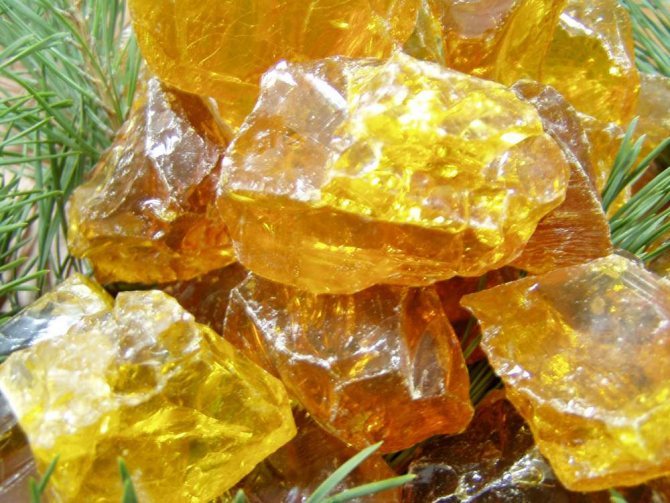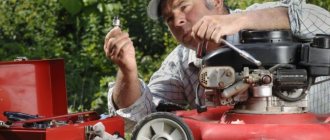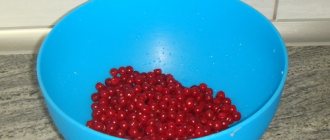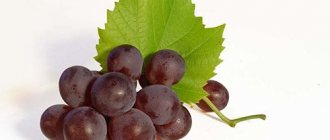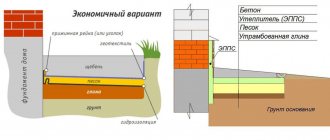Violation of the integrity of the protective cover of the tree in most cases requires the intervention of a gardener. Untreated damage can cause serious illness and even death. The most common causes of such violations are:
- Spring pruning before bud break;
- Autumn pruning to improve wintering;
- Windbreak, squally gusts of wind breaking branches;
- Broken branches during fruiting;
- Damage to tree bark by mechanical means (for example, when working with special equipment or during children's play);
- Wrong vaccination;
- Destruction of the bark when exposed to fungal diseases, insects, rodents.
Super Putty for Wounds on Trees:
Fruit trees, unlike conifers, do not emit enough resin. Therefore, any cuts, the diameter of which exceeds a 10-ruble coin, are subject to mandatory putty.
What to do if the cut is blackened (darkened) or a stain appears?
If the cut on the apple tree was not processed in time, then pathogens could settle on it. With such symptoms, it appears apple cancer and cytosporosis... If these diseases are not treated, then the disease spreads to the rest of the branch, taking up ever larger areas. First, individual branches will dry out, and then the whole tree. Nearby trees can also be affected by this disease.
During treatment, all damaged parts are cut off, going into healthy bark and wood. Process this place 3% Bordeaux mixture, if the leaves have not yet blossomed, or 1% solution, if the growing season has already begun.
Allow to dry a little, and then cover with garden varnish or diluted clay. If the disease continues to spread, the treatment should be repeated. It is necessary to spray not only the place of the cut, but also the entire apple tree completely.
Watch the video report on apple cancer:
What it is
It is a fusible and water-insoluble substance. You can do it yourself or buy it ready-made in the retail network. Most often, var is offered in gardening stores and its price is quite low. It looks like a thick paste, which must be kneaded well before use.
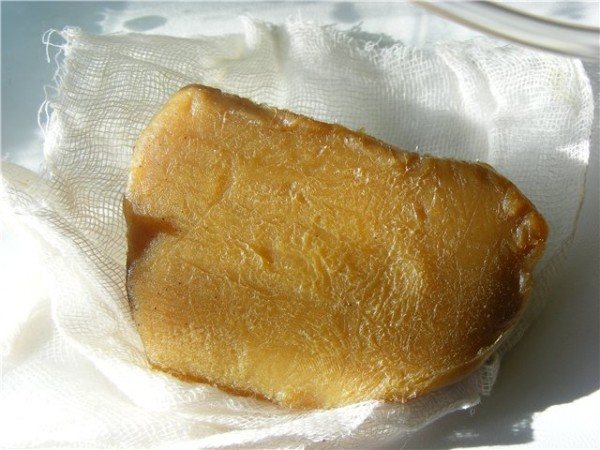
In the photo - homemade garden var
Application
Below you will learn how to use garden varnish correctly to heal wounds that occur on fruit trees. It is necessary to cover the places of broken or cut branches, as well as the areas of grafts, with a cooked and melted paste, like a putty.
Read also Plants in relation to light table
Due to its composition, the substance protects the plant from:
- insect pests;
- fungi;
- prevents branches from drying out;
- penetration of air and water.
This allows the tissues of the trees to renew themselves much faster, thanks to which the plant recovers better. Apply the var with your own hands to damaged areas of the bark or fresh cuts on the tree using a wooden spatula.
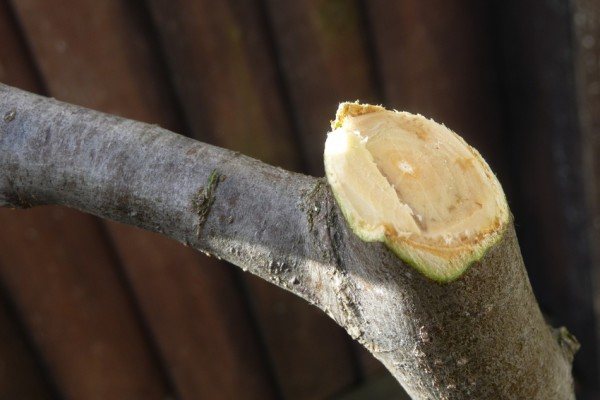

The cut should be repaired
Tip: close up a deep wound with softened garden pitch, adding dolomite or chalk to it.
There is another option, which requires time and patience:
- Smooth out the cut with a knife or planer and leave it for a week to dry. During this time, cracks up to 10 mm deep will appear on the wood;
- now take a garden var, melt it in a water bath, take a brush and process the cut with it.
Tip: do not touch the live bark, as it should make a roller.
It turns out that the mixture does not cover the wood, but impregnates it. After the appearance of new cracks, the process must be repeated. The cut in this case will not get wet and let water through, so the tree will not start to rot.


Good for filling hollows
Manufacturing
Now we will tell you how to cook a garden variety at home on your own.
It will usually be light in color, since it is used for its manufacture:
That is why it is so different from the dark vara, which is used in the shoe industry (it is made from wood or coal tar). The classic composition of the substance, which can be purchased in the store, consists of pine resin, petrolatum and various dietary supplements.
All ingredients must be melted and mixed well.
There are quite a few recipes for how to cook a garden pitch yourself. Therefore, below you will find out about the three most popular at the moment:
| I |
|
| II | Now you will learn how to prepare a so-called "cold" type of garden var at home. It will not need to be reheated afterwards. The instruction is as follows: |
- bring the mixture of (50 g lamb fat, 50 g beeswax and 200 g rosin) to a boil;
- remove it from the stove after 30 minutes and add 2 g of alcohol to the var;
- stir well;
- pour the substance into the previously prepared vessels;
- seal tightly and keep in a cool, dark place.
If you do not have any ingredients in stock, you can replace them:
- beef or lard - instead of lamb fat;
- resin of any coniferous tree - rosin.
Tip: add to the prepared mixture in a ratio of 1 tab. per 1 kg of var, crushed into powder heteroauxin, which will contribute to faster and more effective healing of tree wounds.
What to replace
If you do not have ingredients at hand or you have not purchased a ready-made garden pitch, we suggest that you familiarize yourself with alternative solutions:
- Sometimes gardeners use ordinary oil paint instead, which they simply smear over fresh cuts on the tree of their summer cottage.
- Others replace it with natural drying oil, applying it to a slightly dried cut. You can also apply another coat after drying. In hot weather, drying oil, unlike var, does not spread.
- Doing nothing - there is also such an opinion, since any living creature, including a tree, has its own protective functions. After a while, the wound will heal itself.
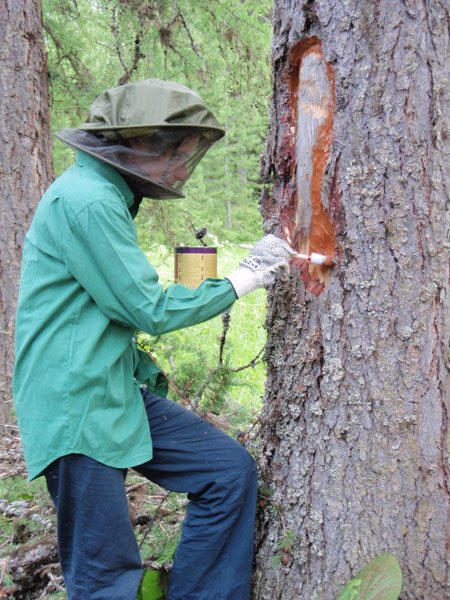

Treating trees with paint
Therefore, it is up to you to decide whether or not to use garden varnish, drying oil or oil paint.
What is garden pitch made of?
Today in gardening stores you can easily find var and other disinfectants. However, the best and most effective one is homemade. There is nothing complicated in the recipe, all the components are usually in the arsenal of every gardener.
The recipe for the product includes the following ingredients:
- beeswax or propolis;
- vegetable or animal oils;
- alcohol;
- rosin;
- antifreeze;
- paraffin;
- drying oil.
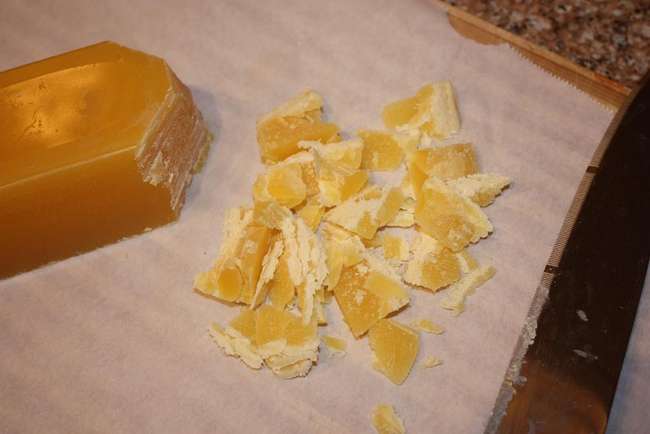

Beeswax is the main component of the putty
Garden ointment comes in two consistencies: liquid, melting when heated, and cold-resistant.
Pros Cons
Let's start with the indisputable advantages that it possesses var for garden trees... Firstly, environmental friendliness. That is, if you have purchased the "correct" product, no dangerous chemicals. substances will not get under the bark of your plant. Secondly, it has excellent moisture insulating properties.
This means that water will not get on the wound from the outside, and it will not evaporate too actively from the inside. It is very easy to handle it, even if you have never performed such operations before, there should be no problems. Another plus is cost. The drug will not ruin you, the product is included in the line of cheap ones.
And now about the possible problems that may arise if you decide use garden var... Waterproofing is good, but not always. For example, due to this property, the applied mass can cause rotting of plant tissues.
This product is not easy to work with in winter. Low temperatures are unfavorable conditions for its use. This is because the putty that has already been applied thickens and becomes difficult to handle. Finally, pay attention to the explanations on the product packaging. Look for one that does not contain chemical additives. They can further aggravate the situation by "rewarding" the plant with a burn.
Read also Unleavened dough for shanegs with potatoes
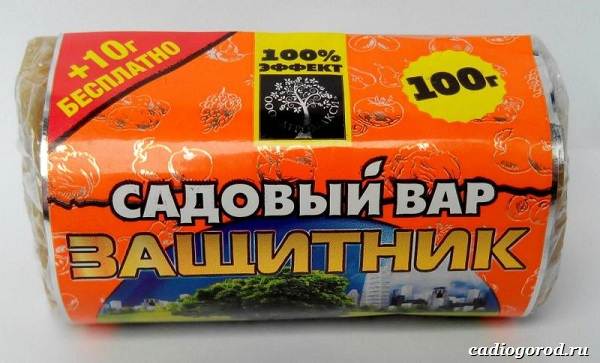

The division can be different, but one of the most popular is as follows:
If you have a bottle of moonshine lying around in your basement or refrigerator, then there is a very useful way to use it. No, you don't need to drink this high-grade product! It will serve us as an integral part of the putty. Such garden pitch at home making is not a problem.
The largest mass in the recipe is sap. It needs about four kilograms. Take a pan, or a bucket, they can be enameled, special will do. glass containers, but only those that are not afraid of heat.
In such a bowl, we drown our resinous mass. After the turn of wax, its mass should be ten times less. Then it’s the turn of that very alcohol. It can be replaced by ordinary alcohol - 600 milliliters.
To preserve the resulting product, you need to drain the mixture into a jar and seal it with a lid. The mixture will be good even in the most severe cases, when the lesion is very deep. New "skin" of the tree will grow directly under the layer of ointment.


This, like the above garden var recipe, includes pine resin, but pine is best. It will take four hundred grams. We dilute it, after warming up, with 60 milliliters of alcohol.
As additives, here is gum, we take 4 grams of it, and soda, which needs a little - a teaspoon. We put the last two components in water, dissolve, and only then add to a viscous mixture. When you apply the ointment, take a brush, it will be easier to work with.
You need a pound of resin, it can be of any kind, the main thing is to be natural. Heat the amber base over a fire. This is a ready-made base, which requires 60 milliliters of alcohol. You can't do without oil yet. It is best to prepare flaxseed, do not overdo it, you only need a couple of tablespoons.
It is safest to store such a blank in a jar, but not in a glass, but in a tin. By the way, frosty days are not a hindrance to such compositions. If you did everything correctly, it should not lose its original properties and viscosity even in cold air.


This is what is called a time-tested combination. It was introduced by a Soviet scientist, after whom a type of substance was named. To get it, three ingredients are taken: beeswax, into which rosin and necessarily fat are introduced.
The latter can be either beef or pork. To get the right product, we first heat all the ingredients in a water bath.Wax is the base. For him, we take the largest container, because it is there that we will subsequently pour in the other two components.
They should not be added immediately, but gradually, in a thin stream, without forgetting to interfere. If you have prepared a product for several uses at once, then you need to reduce the temperature of the mixture by applying cold water.
When your product takes on a solid state, it is easy to cut into pieces that are convenient for storage. Wrap such blanks with paper coated with oil, and store in a dark place.
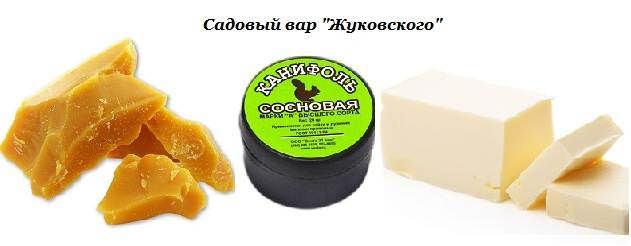

Based on the name, it is easy to understand that the drug is named after its inventor - a gardener revered by many avid gardeners. If you undertake a batch of such a composition, it is better to do it either on the street or on the veranda.
Because the "flavor" will be specific. The reason for this is turpentine, or turpentine known to each of us, but not chemical. production, but gum. It needs a little less than half a kilogram. The same amount of beeswax will be useful, into which the odorous substance will be injected.
And you can't do without rosin, we take it in half. Melted lard, or rather liquid fat, which was obtained from it, will give elasticity. Here the dosage is already 85 grams. We keep everything in the same paper rolls. The product turns out to be quite thick, so when applying it, you can completely do it yourself with your own hand.
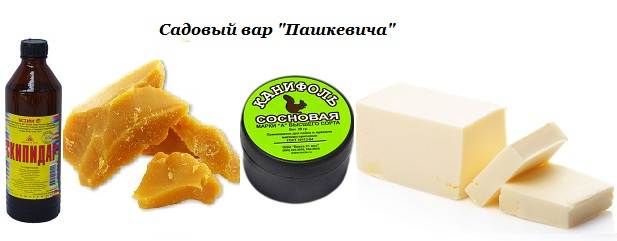

Apple tree bark is damaged - what to do?
The bark of the apple tree is damaged due to sunburn, temperature changes in winter, due to rodents or other mechanical damage... Also, the bark can flake off from an old unkempt tree. The bark on the apple tree is restored, but only if the damage is minor. If the bark is damaged around the entire circumference, then the tree will dry out.
The bark seizures are cut off with a garden knife, the exfoliated pieces are cleaned off with a hard brush. When working, you must try not to damage the wood. Be sure to treat with Bordeaux mixturebecause there may be pest larvae under the bark.
Place to cover up a mixture of clay, mullein and ash, diluted with water... For reliability, the place of damage is bandaged with natural fabric.
What can be replaced
It so happens that there was no ready-made protective mixture at hand, but it is necessary to cover up the wounds on the plant. There are proven ways to provide emergency assistance to a tree.
- Earth or clay. Wet garden soil or wet clay can protect exposed wood from infection for a short time. So that the earth does not crumble from the trunk, it is fixed with a strip of fabric (burlap, a piece of an old sheet). If you add a cake of cow dung to liquid clay, you get not only a protective, but also a healing agent for the plant.
- Polyethylene film. It is convenient to close the vaccination site by wrapping it with a narrow strip of polyethylene, electrical tape or a special grafting film.
- You can cover the wound on the trunk with ordinary paint, based on natural drying oil.
There are no trifles in gardening. We recommend not only keeping your garden tools in order, but also collecting a “garden first aid kit” to treat your green wards. Garden var, bought in a store or prepared with your own hands, must be at hand at the right time.
Garden var instructions for use
Using healing var is easy. There are several principles for its application. If you apply the ointment on time and according to the instructions, then the plant will be protected from diseases and pests.
How to use garden var
A substance is used to disinfect wounds and injuries during sanitary and formative pruning, to seal up cracks and wounds, to prevent sap or resin from leaking out, to protect against diseases and pests. Var helps with damage to the bark by rodents.
After applying the ointment, it is easier for a shrub or tree to recover, to direct forces to the harvest, and not to recover from a wound.
Features of the use of a disinfectant ointment include the following points:
- Only healthy areas of wood can be processed. Remove dry, infected, damaged areas;
- Wounds and cuts should be smooth, there should be no growths and irregularities. Sand them with sandpaper;
- The wound is first washed with usually clean and warm water. The instruments must also be clean.
- Treatment is carried out in the spring or early summer. The damaged area must be dry. The layer can be updated during the season.
- When covering up the hollows, treatment with copper sulfate or alcohol is mandatory, like all tools.
How to cover a tree with garden varnish
Healing ointment is applied according to certain rules:
- Remove damaged and diseased branches, clean the sections with a sharp knife;
- The instruments must be clean, preferably disinfected;
- The weather should be dry and cool;
- Wash the wounds with a solution of potassium permanganate or copper sulfate;
- Cover the cut only after drying;
- Warm the healing ointment a little: in the sun, in a water bath or in your hands;
- Apply the substance in a thin layer, evenly, leaving no empty spots;
- If a large area is damaged, apply an additional bandage or rag.
Repeat the procedure if necessary, as the layer may crack and allow moisture to pass through.
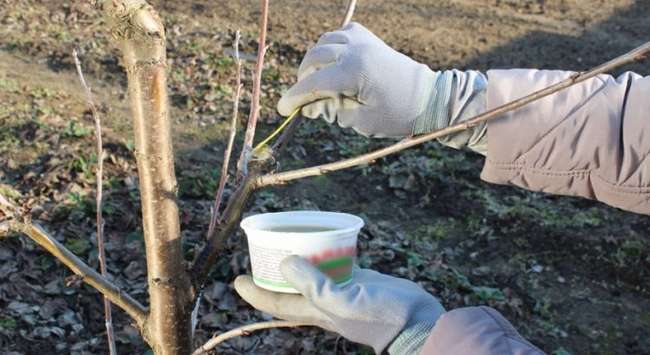

Grafting with garden var
Healing putty is an excellent remedy for covering wounds during grafting. After the procedure, the place is covered up and wrapped with tape. The product is applied in a thin layer with a spatula or wooden stick. Grafting wax is suitable for the following grafting methods:
- budding;
- ablating;
- for the bark.
You can find out about these and other methods of vaccination, as well as tips on vaccination, from the article - When can you vaccinate apple trees.
An important point - the var should not get between the scion and the stock, otherwise the accretion will occur slowly and crookedly. It can even cause rejection.


How to apply garden var
It is necessary to lubricate the wound, hollow, the place of the peeled bark and other injuries with a thin layer using a spatula or wooden stick. It can also be done with gloved hands, and large cuts with a brush or roller. Do not cover up immediately after damage. Let the cut dry. Pre-wash the place with potassium permanganate or copper sulfate. If the weather is cool, then warm the ointment in your hands or in a water bath.
A drug for treating trees, how to use a garden pitch
For a faster recovery of plantings after injuries and pruning, it is necessary to follow all the rules for its treatment.
1. The cooked var can be used only on the surface of healthy wood. For this reason, all affected, dead and rotten parts of the plant should be removed in advance.
2. The cut that needs processing should not have bulges and irregularities. If they are still there, the surface of the site must be cleaned.
3. Not forgetting about the autumn-spring terms of manipulation to help the trees, if it is necessary to cut them on the plant at another time, you should still slightly clean them up and cover them with pitch. And with the onset of the deadline, the garden pitch should be replaced by carefully processing the cuts and reapplying it.
4. Before using the compounds, we wash the wounds on the tree with water to protect the plant from infection.
We suggest that you familiarize yourself with: Application for Bordeaux liquid for tomatoes: how to prepare a mixture for tomatoes, description, video
Purpose of the substance
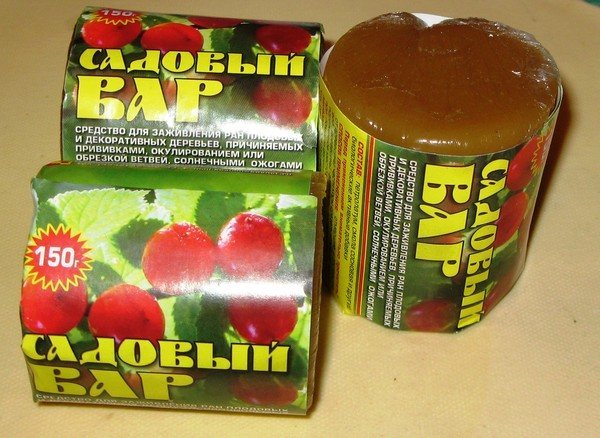

Experienced gardeners are probably familiar with the concept of garden var, but for some, this term will be new. Below we will tell you in detail about the main purpose of this composition, consider its advantages and disadvantages.
Garden var is a special putty used to protect fresh tree wounds from diseases, fungi, insects and parasites, as well as from the leakage of plant sap. Among other things, this composition contributes to the rapid healing of slices. It should be borne in mind that var cannot be applied to damage immediately after it has formed. You need to wait for the moment when the cut dries slightly, and only then start the procedure.
Wounds on trees can form for various reasons, for example, as a result of cutting off any fragment of a plant, after grafting, as a result of damage by rodents or pests. If you do not protect the tree from negative environmental factors in time, an infection can get into the cut. In addition, cracks may appear in the damaged area and the plant will begin to ache.
Application and healing properties of var
In gardening, such a healing mixture is simply irreplaceable. It is used in many cases where other remedies cannot help or are not available.
Application of the product:
- heals damage to the bark of a tree;
- used after grafting and pruning trees;
- with its help cuttings are preserved for the winter.
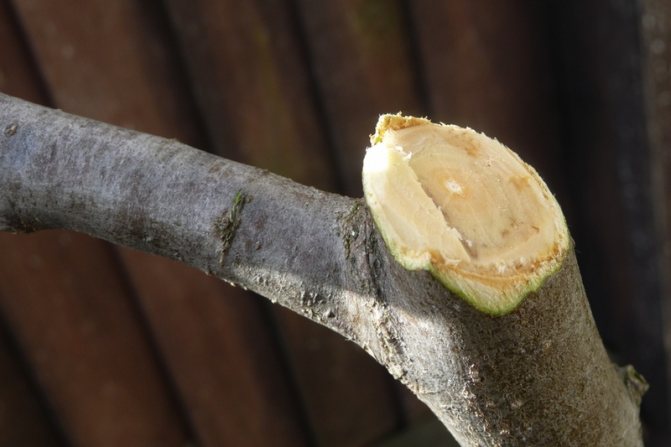

Var for trees can be compared to brilliant green for humans. Due to the special components in the composition, the product has a lot of medicinal properties.
In some exceptional cases, there is nothing to replace the var for trees. Its healing properties able to bring back to life even the most lifeless plant:
- healing;
- anti-inflammatory;
- promotes the rapid recovery of serious damage;
- blocks the access of insects and pests to an open wound;
- prevents harmful microorganisms from multiplying in the bark of trees.
There are several recipes for making a healing mixture for the garden. But the components in them are almost all the same. There are advantages and disadvantages to using the mixture. Before using the mixture, you must familiarize yourself with them.
DIY garden var
As mentioned above, it is not necessary to buy a medicated ointment in a store. You can cook it yourself. There are many recipes. There is room for experimentation. You can find the right recipe to suit the application and weather conditions. In addition, this option is more economical and budgetary than the purchased one.
Garden var at home based on paraffin
Garden pitch consists of:
- paraffin - 6 parts;
- rosin - 3 parts;
- mineral or vegetable oil - 2 parts.
Crush the rosin to a fine soap or flour, melt the paraffin wax. Mix the ingredients and put on fire, bring to a boil. Pour oil into the mass. Simmer for half an hour. Pour the finished substance into a container and leave to cool.
You can make a disinfectant putty on parfin with the same composition, but in different proportions. Add all components in equal parts.
Beeswax based
The healing ointment consists of:
- rosin - half of the composition;
- beeswax - 2 parts;
- interior fat - 1 part.
First, melt the wax, add the rest of the ingredients to the boiling mass. Cook everything for half an hour, then pour into containers and let cool. When the mass becomes warm, knead it in your hands until smooth.
You can diversify recipes with beeswax if you add turpentine, unsalted fat, propolis, pork fat to the composition. You can cool the mass in a bucket of cold water, wait until it curls up and form a shape out of it. Store the var in oiled paper. Use only in warm weather.
To prevent wasps and bees from flying off the treated area, cover it with a cloth. But do not use film, otherwise the substance will not dry out.
Cold-resistant putty at home
Cold-resistant species are used for healing plants in the fall before frost. They are prepared on the basis of alcohol. The following several recipes are popular:
- Reshetnikov's ointment is prepared from fir resin, adding a little alcohol and yellow wax. The components are melted and mixed with alcohol. Slices are covered with a brush.
- Gaug putty is made from pine resin, regular soda, gum, and alcohol. First melt the resin and mix with alcohol. Separately dissolve gum and soda in water, add to the resin mixture. Apply with a brush.
- Raevsky's putty is prepared from tree resin, linseed oil and alcohol. Oil and alcohol are poured into the melted resin. The cooled mixture is poured into a metal container and left for storage.
How to do it yourself at home
To be sure of the quality of a protective agent for your green pets, garden var can be prepared at home. For work, you need to prepare in advance a suitable saucepan, a ladle of cold water and a container for the finished product (a wide jar lined with baking paper or foil).
Store the prepared mixture in a cool, dark place.
There are many recipes for preparing tree protection. Let's consider the most popular ones.
Paraffin-based protective agent
Paraffin wax can be bought at the pharmacy, the product is inexpensive and affordable. When melted, it combines perfectly with other ingredients, forming a homogeneous mass.
Garden paraffin varnish is applied to the trunk slightly warmed up, in a semi-liquid state. It flows well into all cracks, sealing them tightly.
600 g of paraffin is melted in a water bath, 300 g of rosin crushed into powder are added to it. Stirring constantly, 200 g of vegetable oil or animal fat are poured into the mixture. Warm up, stirring the mixture, for 15 - 20 minutes. The product cooled down to a warm state can be used.
Another recipe: paraffin and rosin in equal proportions are heated over a fire, and 1 part of natural drying oil is added. The mixture is heated, cooled and used as usual.
Wax-based protective blend
Beeswax is able not only to mechanically protect damaged wood, but also has antiseptic properties. The wax can be purchased at apiaries or in special stores with goods from beekeepers. Var with wax is prepared in the same way as on paraffin: all the components of the mixture are heated, mixed and boiled for 20 - 25 minutes. Dosage: beeswax 2 parts by volume, rosin - 4, internal reheated fat - 1 part.
For use in cold weather
This mixture remains viscous for a long time, allowing you to work with trees at sub-zero temperatures.
Reshetnikov's garden var: resin (fir resin) 200 g, beeswax 20 g, wine alcohol - 20 g. In a saucepan melt wax and resin, stirring thoroughly, avoiding the formation of lumps. Alcohol is added to the slightly cooled mass, and mixed again. Var is applied slightly warm, with a brush, to the affected areas of the tree.
Gauga's protective mixture: sap 400 g, medical alcohol 60 ml, gum 4 g, baking soda 1 tsp. Alcohol and soda and crushed gum diluted in a spoonful of water are added to the melted resin. Everything is mixed well, and the warm mixture is applied to the trees.
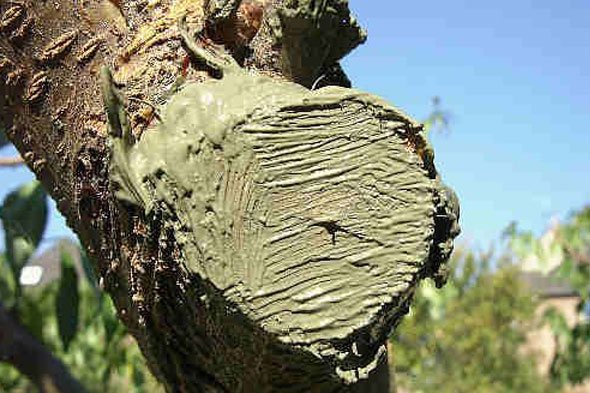

Raevsky's var: resin 500 g, medical alcohol 60 ml, linseed oil 20 ml. Heat the resin and pour in the liquid components, mix everything. Var can be stored in a tightly closed metal container in a cool place.
The choice of a recipe for preparing a protective mixture for a tree depends on the gardener, any of the above potions will help heal wounds for a green pet.
Description and photo
The main component of the garden var is:
- tree resin (used to seal the damaged area);
- natural beeswax (powerful antiseptic, stimulates tissue regeneration);
- fat (makes the var viscous and easy to apply);
- rosin (product binder for all ingredients);
- alcohol.
Additionally, manufacturers add various chemical antiseptic additives.
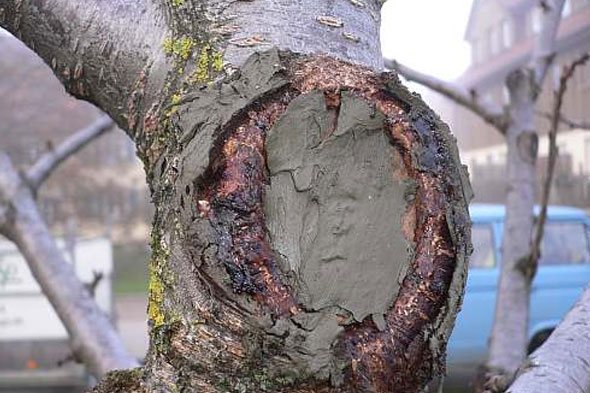

Garden var closes the wounds on the tree trunk, preventing sap from flowing out, and prevents fungi, insects, and microbes from entering the cambium. You need to have this tool on hand for the following work:
- sanitary pruning of bushes and trees;
- cleaning damage from frost, sunburn on the trunk;
- treatment of diseases and pests;
- vaccination.
It is applied to the damaged surface not immediately after cleaning, but after half an hour. During this time, the wood will wind a little, and the garden pitch will lie better.
If it is cool outside, the var can harden; before use, it is warmed up and kneaded in the palms of the hands.
The disadvantages of the tool include the fact that wood does not breathe under it. With a large area of the treated surface, the wound heals for a long time and the decay process can begin.
Often in the composition of the purchased garden varnish there are chemical additives that can harm the tree.
Replacing Varu
If for some reason it is not possible to prepare a garden var, you can replace it with the following compositions:
- Ordinary land. If the tree is damaged, and the necessary components are not at hand, you can put ordinary earth on the wound and fix it with a cloth or polyethylene. This "help" will last for several days, until the preparation of the garden varnish.
- Mullein. You can mix 500 g of mullein with 1 kg of clay or hay and mix thoroughly. Apply the ready-made composition to damage. To give antiseptic properties, you can add a solution of copper sulfate to the composition.
Garden pitch is an indispensable tool for any gardener. It is absolutely safe and can also be used not only for trees, but also for shrubs.
Why do you need to paint over trees?
Untreated wounds have an extremely negative effect on the health of the tree, and, consequently, on its yield and longevity. Influence is carried out in 3 aspects:
- A lot of moisture is lost through a large cutting area, which leads to a weakening of immunity and a deterioration in nutrition. If in adult trees, wounds with a diameter of up to 2 cm heal on their own, and the intervention of the gardener requires only significant injuries, then even small injuries can pose a threat to seedlings;
In places where the protective cover is destroyed, pathogenic fungi begin to multiply rapidly, which can provoke rotting and the formation of hollows.
- An untreated wound can heal and crack. This is facilitated by certain weather:
- Summer heat, during which the cut dries up;
- Autumn frosts, when the moisture contained in the sapwood - the inner part of the trunk exposed when cut - freezes, and under the action of expansion increases the gap between the fibers;
- The affected area becomes attractive not only for microbes, but also for insects, birds, and rodents.
It is desirable to carry out processing immediately after damage. This allows, with the maximum degree of probability, to prevent tissue infection.
REFERENCE: Hollows themselves are not dangerous - a healthy tree trunk has natural barriers that prevent the spread of decay, and the water that accumulates in the cavity inhibits the development of fungi. However, large hollows reduce the structural strength of the wood, increasing the risk of trunk breakage, which is especially important for fruit trees.
How to wash off the garden pitch from your hands
Experienced gardeners recommend working with garden varnish with rubber gloves. But if, nevertheless, he fell into his hands, then he must be washed off. You can remove the ointment from your hands using non-polar solvents, for example, White Spirit. Some advise flushing with gasoline.
But don't use overly concentrated liquids. Do not rub in opposite directions, as this will increase the surface of the dirt. Work your hands from the edges to the center.Rinse off in cool, not cold, but room temperature water. Fats polymerize in hot water.
Advantages and disadvantages
The tool is used exclusively for medicinal purposes. But it is impossible to process the wound of the plant immediately, it should dry out a little, only in a dried form it can be treated.
In what cases can wounds appear on trees and bushes:
- with incorrect pruning;
- when removing branches by breaking off;
- improper plant grafting;
- in case of damage by rodents;
- defeat by some diseases.
In all these cases, the use of a garden varnish is recommended.
Application advantages:
- the mixture is easy to prepare on your own; it is not difficult to apply to the wound;
- they cannot get dirty, it has a thick consistency;
- it passes air and moisture well to the wound, does not allow it to dry out.
Transplanting lilies in the fall - the right technique for better flowering
But before you make and use the var yourself, it is necessary to take into account all its disadvantages:
- if you process large wounds with a pitch, they dry out for a long time, which in some cases can lead to wood rotting;
- it is advisable to use var in warm weather. At cold temperatures, it instantly hardens and is poorly applied to wounded areas;
- in hot weather, var is capable of burning wood, which can lead to undesirable consequences.
Each gardener chooses for himself whether to use the var in his activities. But if he has already given his preference to this particular remedy, now you can choose the most relevant recipe.
What if the cut is rotting?
If the cut on the apple tree began to rot, then this may indicate that the tree is infected with spores. tinder fungus. Spores are carried by the wind, and an uncovered cut is a great place to get infected. The means of dealing with this scourge have not yet been invented.
The branch is cut off completely and the cut point is checked. Healthy wood is an indicator that the disease has not yet penetrated deep into the apple tree. The diseased branch is burned, and the cut is disinfected and covered with garden varnish.
If there is a saw cut soft dark wood, it means that the tinder fungus took possession of the entire tree, after a while the apple tree will die. It is cut down completely and burned. If you leave it, then the whole garden can become infected.
Features of tree processing
For the safe development of trees after pruning or the formation of other damage, their processing must be done, observing some rules:
- Only healthy surfaces are allowed to be processed with a garden varnish, therefore, dead, damaged or rotted wood is removed. Otherwise, the degenerative process will continue under the layer of the mixture.
- Only smooth surfaces are suitable for coating with this product. Any bumps or irregularities are cut or trimmed with tools.
- Damaged wood should be treated in the spring. If the formation of a wound occurred at a later date, then the cut or sore spot is temporarily covered with pitch. And with the onset of spring, the damage is cleaned of varnish, carefully processed and again covered with fresh substance.
- The treatment area must be clean, before applying the varnish it is necessary to remove dirt from it, rinse with water and dry well.
- The gardener needs to work only with gloves.
- When rotten wood is cleaned from the hollow, the treated surfaces must be disinfected with 5% copper sulfate, and hands and tools with alcohol.
- When treating a tree with cytosporosis or nectria, the affected areas are treated with 2% copper sulfate or 5% iron sulfate. After using chemicals, treat tools and hands with alcohol.
The article presents various recipes for garden brews, alternative compositions and methods of their use. Using these tools will help you avoid many of the troubles associated with various types of tree damage.
Minor tree injuries when pruning
In the course of garden pruning and other types of gardening work, it happens that a one-year-old shoot gets caught in it, clothes get caught and its tip is broken. You can just break the kidney located at the end of the shoot. At first glance, it's okay: there are hundreds of buds even on a young tree.
However, each bud is a future shoot that could grow out of it this year. Imagine that you cut a tree, transferring its growth to certain buds, and then broke some of them. The picture of the development of a tree can change quite significantly and differ greatly from your plans.
Hollow processing of fruit trees
no need to close the hollow! The water cannot be stopped with this plug. Neither concrete nor clay are waterproofing agents; plasticine cannot provide complete tightness at the junction with the bark. And since it is not full, then the water will find the entrance. But there is no way out.
I recommend the following method: the hollow should be freed from dead wood as much as possible and should be done regularly. If the hollow is through, then clean it to form a pipe. It is not required to remove all the dead tissue down to the last splinter, only ventilation of the inner space is needed.
If the hollow is small, then it can be treated. Around the hollow there is always an annular ridge on the bark, tending to close the lumen of the hollow. Its growth can be accelerated by cutting the inner part of the influx with a sharp knife and be sure to cover up the incision. The cambium in the section grows more intensively and the edges of the influx converge faster.
Respectfully yours, scientist agronomist fruit and vegetable grower, Ilya.
Tags: wood, putty, means, cut
About
«Previous post
How to put putty on a damaged area of a tree
If the saw cut is small, then it can be covered with an ordinary paint brush, but if the wound is large, then it is treated with a spatula or roller.
Experienced gardeners do not recommend spraying the putty with a spray gun, because this method is not the most economical, and besides, it will not be able to process such hard-to-reach places as cracks.
Scrape off the layer of dead cells that cannot be restored, otherwise it will prevent the penetration of new putty to living tissue.
After cleaning, some gardeners additionally disinfect the cut site with a 5% solution of ferrous sulfate or a pink solution of potassium permanganate.
But this procedure is not necessary if any disinfectant component (antiseptic) is included in the composition of the putty you have chosen.
The putty is applied in one thin layer. The key role is not played by the thickness of the layer, but by the uniformity of the coating of the damaged surface.
Wherein healthy wood should not be smearedas this will interfere with the bark from tightening the wound.
Summing up, we note:
- putty promotes healing of tree wounds. It disinfects and protects the damaged part of the tree from drying out and getting insects, bacteria and fungal spores into the wound;
- some types of putty not only seal, but also help trees to cope with the effects of sunburn and frostbite;
- for putty, garden var, Robin Green biobalm, RanNet paste and other solutions are used; - it is better to give preference to those products, which contain as little as possible petroleum products and other “chemistry”;
- some putties can be made at home - they will be cheaper and their components will be more natural;
- a small saw cut or cut can be covered with an ordinary paint brush, and if the wound is large, then it is treated with a spatula or roller;
- the damaged area is cleaned, only then it is covered up, while the putty is applied in a uniform thin layer.
How to use it correctly
Garden var should be applied to the wound either with a brush or with a spatula. It all depends on the depth and magnitude of the damage.


A small amount of putty should be applied to the wound, and it should be evenly distributed over all surfaces of the injury.
Recommendation: if an antiseptic is already included in the garden varnish, then the wound may not be pretreated with an antiseptic. It is enough to rinse the damaged area with water to remove dust and dirt.
If the damage on the tree is too deep, then you should carefully treat the wound with an antiseptic, and only then cover it with garden var.
Failure to comply with garden pruning deadlines
In central Russia, it is recommended to carry out
spring pruning of the garden when the trees are dormant. From the end of February (at daytime temperatures above zero), until the end of April (before the beginning of the opening of the kidneys). In frost conditions and with the predicted onset of frost in less than 2 weeks, pruning cannot be done. Deep freezing occurs and the so-called frosty drying of the cut.
With the end of the dormant period, sap flow and a strong flow of juice from the slices begins. It is impossible to gloss over such sections well. The juice attracts insects - carriers of infection. In the southern regions, where there are no prolonged frosts, the pruning of gardens is done mainly in the fall.
During summer and fall, only broken or dead branches can be cut. As a last resort, remove small branches that are clearly growing in the wrong place.
Whitewashing products
Trees are whitewashed with a variety of mixtures, but most often with lime mortar. There are many recipes, and each gardener has his own ideas about their composition. Despite the wide range of opinions, there are not so many main components of the whitewash composition - only three:
- A substance that gives the product an elegant and very necessary whiteness (lime or chalk);
- A substance that will ensure the adhesion of the solution to the barrel (clay, milk, laundry or green soap, casein glue or PVA glue);
- A substance that gives a disinfecting effect (copper sulfate and others).
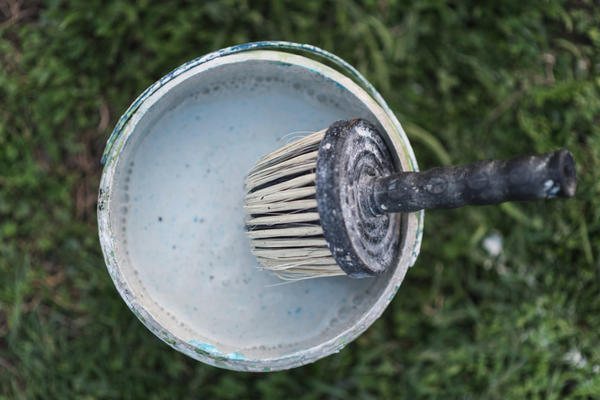

Shop garden var or how they deceive us
In the USSR, shops sold a classic garden pitch, the basis of which was tree resin. But, since the 90s of the last century, entrepreneurs have realized that this tool can make good money if you reduce the cost and began to work wonders. Let's take a look at the composition of the popular "garden food" that can be found in online stores and on the shelves of shopping centers.
RanNet - a garden pitch?
It is positioned as a garden var, but it is not. Online stores are silent about the full complement, they only talk about copper sulfate and dietary supplements.
I managed to find out that the basis of this tool is 3M latacryl. This is a thermoplastic glue, which, moreover, is manufactured according to TU, and not according to GOST. It is widely used in construction and renovation for bonding various materials.
According to the reviews of experienced gardeners, for example, in this article, RanNet is quickly washed off with water. This means that it is able to penetrate between cambium cells and slow down the healing of wounds on a tree.
Robin Green - another representative
In online stores you can find such delight as the Robin Green garden var. It is produced in the form of a kind of sausages and, according to the manufacturer's assurances, has bactericidal and wound-healing properties.
Let's examine the composition of this miracle:
- petrolatum;
- vegetable wax;
- other dietary supplements.
The last item is delivering. The consumer should guess what is there, and the manufacturer should proudly keep silent about it. Vegetable wax is also touching. It's all the same that vegetable oil, without specification, sunflower or soybean oil. It can be anything from carnauba palm wax to rice wax.
But most of all, the first substance (main), petrolatum, caused a bitter smile: a by-product of the processing of petroleum oils, consisting of paraffin and ceresin. It is a toxic substance that causes comedones in humans.
Petrolatum is the basis of 90% of shop "garden", due to its low cost and viscosity.But, if it is used in gardening, irreparable damage will be caused to the tree. In addition, it interferes with the normal fusion of tissues, slows down their healing.
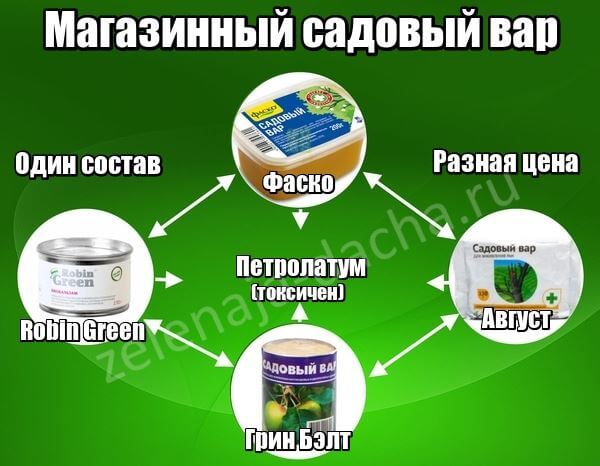

Other wonders of commercial thought
I will not torment you much and delve into the peculiarities of store products. I will list those that, in my opinion, are not vars and can harm your apple or cherry.
- "August". The basis of the composition is the notorious petrolatum.
- Green Belt. The composition is identical to Robin Green.
- "Gardener". There is wood resin, but the base is petrolatum again.
- Fasco. The composition is the same as that of "Gardener". Disguise under the phrase "a combination of paraffin-like compounds."
- Inta Vir is petrolatum again.
Honestly, I was shocked when I was looking for a normal garden pitch I did not find. No benefit, sheer harm. So, we will prepare this tool with our own hands. Not in order to save money (it will come out more expensive), but for your own safety.
Additional Tips
When using such a complex and useful composition, the advice of experienced gardeners should be taken into account.
The use of acaricidal agents against ticks in animals
Helpful hints:
- it is necessary to re-treat the surface with the composition only if necessary. If you really need it, you can repeat the process again after 2-3 days;
- if pests are present in the bark of the plant, it is not recommended to apply the mixture. First you need to completely get rid of parasites and only then apply the mixture to the bark;
- when working with a mixture, additional protective equipment is not required. For processing, you need to purchase only ordinary cotton gloves;
- keep the composition out of the reach of children and animals. Preferably away from fire and cool.
Instructions for use for a self-prepared composition are also suitable for purchased products.
Var is one of the most effective and safe methods of plant treatment, but you can still replace it with other means.
Features of use
Everyone can use the garden pitch. However, the process has its own subtleties. To get the desired effect, you need to follow the rules:
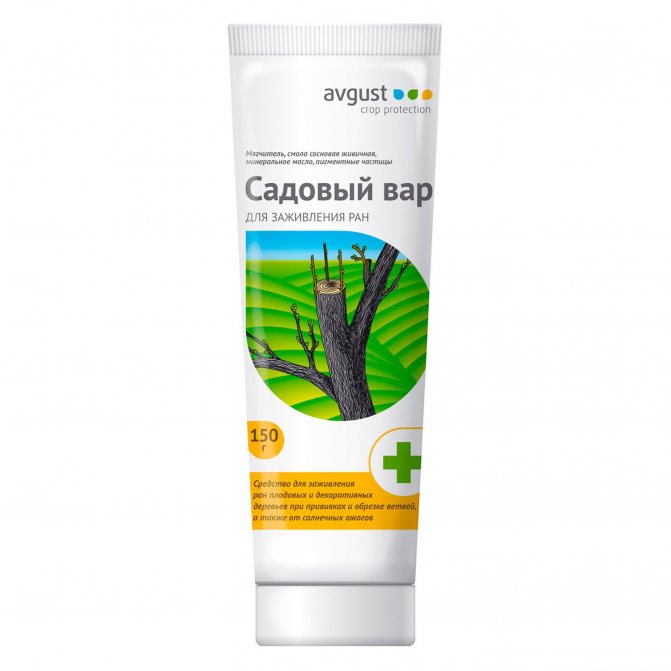

Only healthy areas of the bark surrounding the wound should be treated with the mixture. The damaged tissue is removed. This is done so that the "infection" does not spread to neighboring areas.- The wound is cleaned around the perimeter.
- The surface of the area to be treated must be clean. Usually it is simply washed with water, less often the application of special antiseptics is required. For example, the hollow is treated with copper sulfate.
- The "medicine" is usually applied at the end of spring. If the tree is damaged, then emergency treatment is performed.
- Var is applied with a roller or spatula. It is necessary to distribute the product evenly, in a small layer. The main condition: it is necessary to cover the entire damaged surface, covering every millimeter so as not to leave untreated gaps.
Hosta care rules in autumn and plant preparation for winter
Garden var is an effective and versatile remedy for the elimination of defects and the treatment of horticultural crops. Attracted by the availability of components and the simple cooking process.
Purchased funds
In modern stores, it is easy to find a ready-made remedy for treating injuries on different parts of the tree. The most common variants of such compositions include "Garden Var" and its varieties such as "Bee", "Garden Var Bugorkova", "BlagoSad" putty and "Rannet" garden paste.
You can also buy "Entomological garden glue", which is also often used in the treatment of damage to wood, but what exactly to choose and what composition to entrust his plants to - each gardener must decide for himself.
Most of the mixtures are really good at sealing wounds, but it is always worth remembering the folk recipes that have been tested by time.
There is an opinion that they heal wounds much faster and prevent the appearance of parasites, moreover, when you create a viscous mixture on your own, you can be sure that there are no harmful chemical impurities in it.
Description, features and composition
At the time of the Soviet Union…. We are sure that you have heard more than once how people talk with nostalgia about things or products that during the Soviet era were distinguished by their amazing quality and taste. They love to remember those times and gardeners who did not forget about simple, but very effective drugs, then available to everyone.
One of these means is garden var... Almost every gardener had it at hand. And the reviews about this line-up were mostly good. Therefore, this simple product is still in demand.
Its task is to protect wood "wounds" from infections and other troubles. These can be various infections, the harmful effects of too frosty air, or too active evaporation of moisture.
What was the product like before, and has it changed now? To answer this question, you need to study the composition of the substance. In its classic form, it is a paste made from bee products and natural resin. In addition to these ingredients in garden varnish composition may include:
- Any oil of exclusively natural origin. This component must have antiseptic properties. This includes pomace from flax and calendula.
- Beeswax. This compound ingredient contains up to three hundred different ingredients. These are complex essential substances, acids, and minerals. Together, all this works to accelerate tissue regeneration and healing.
- Another product made by winged insects is propolis. This miracle remedy is capable of fighting bacteria, viruses and fungi.
- Rosin. Also resin, but only produced by conifers.
- Alcohol. It is added to the composition to achieve stronger disinfection. Plus, it helps the substance to be more plastic even in the cold.


When you apply this compound to damaged areas of a tree, it should help repair the tissue. When is it relevant?
- If you have performed a planned pruning of branches
- Accidentally damaged the surface layer of the plant
- Hail, strong wind, frost, or the burning rays of the sun have caused the formation of "open wounds"
- Pests can also cause damage, various rodents are especially dangerous in this regard. Insects often act as aggressors.

